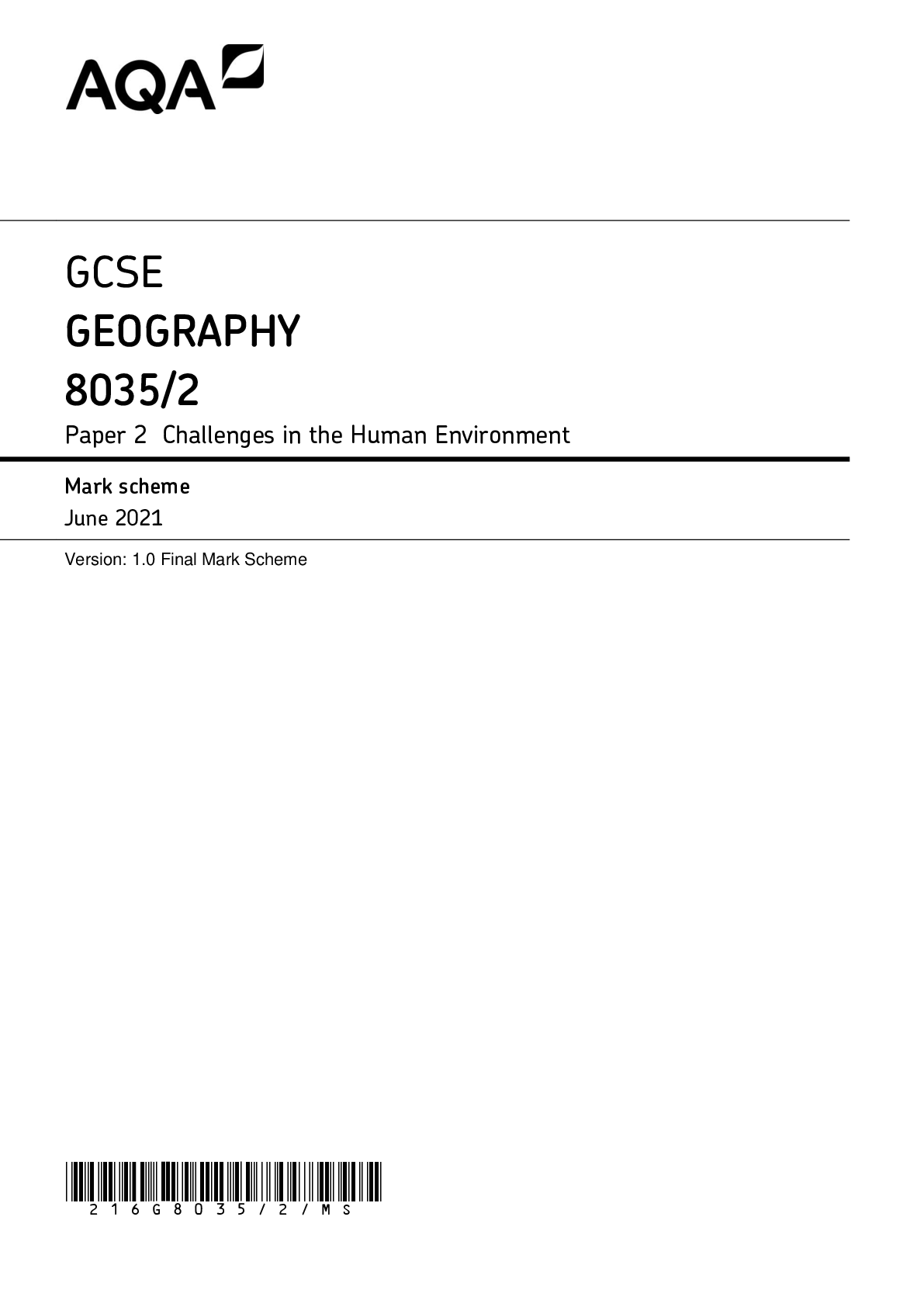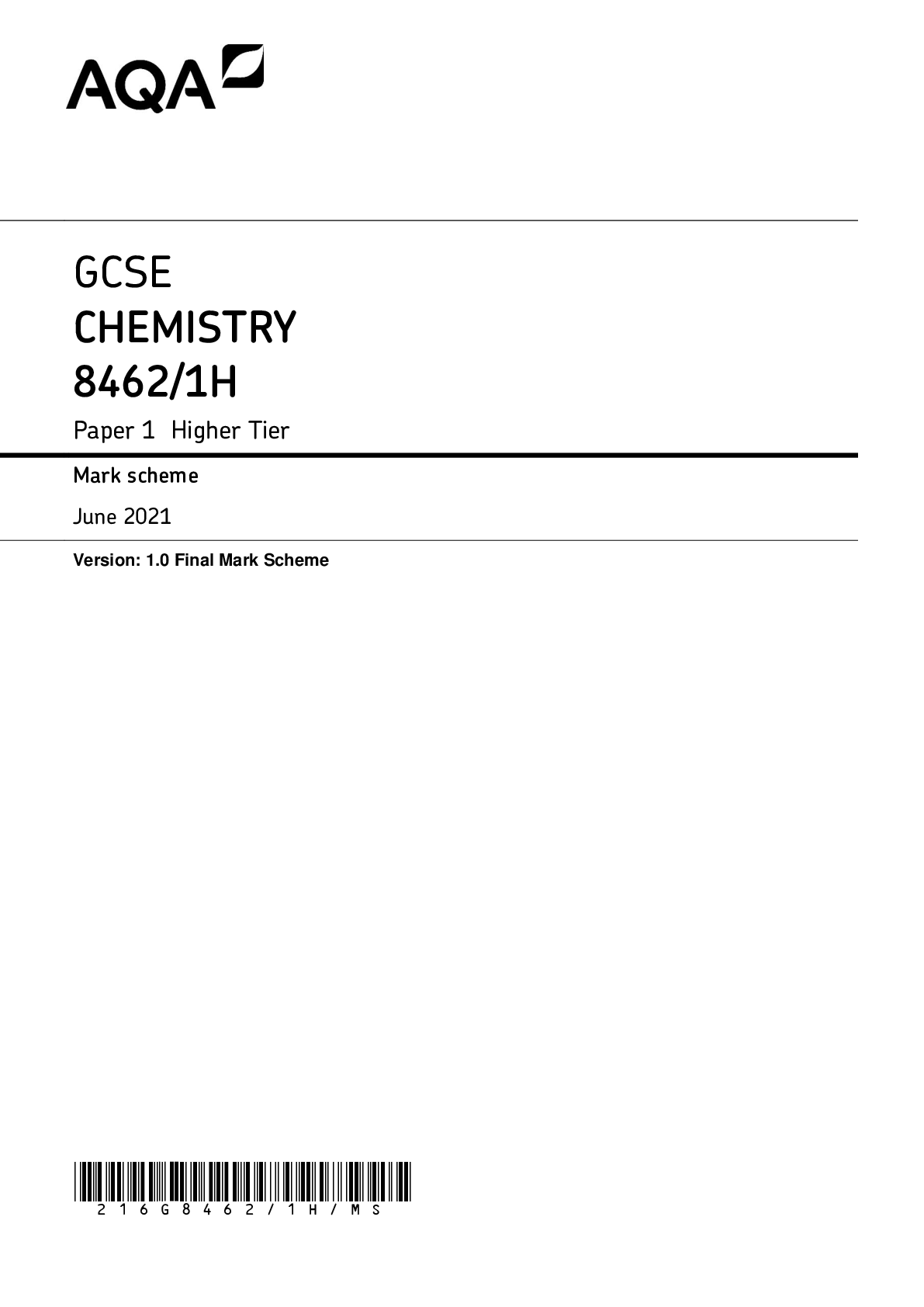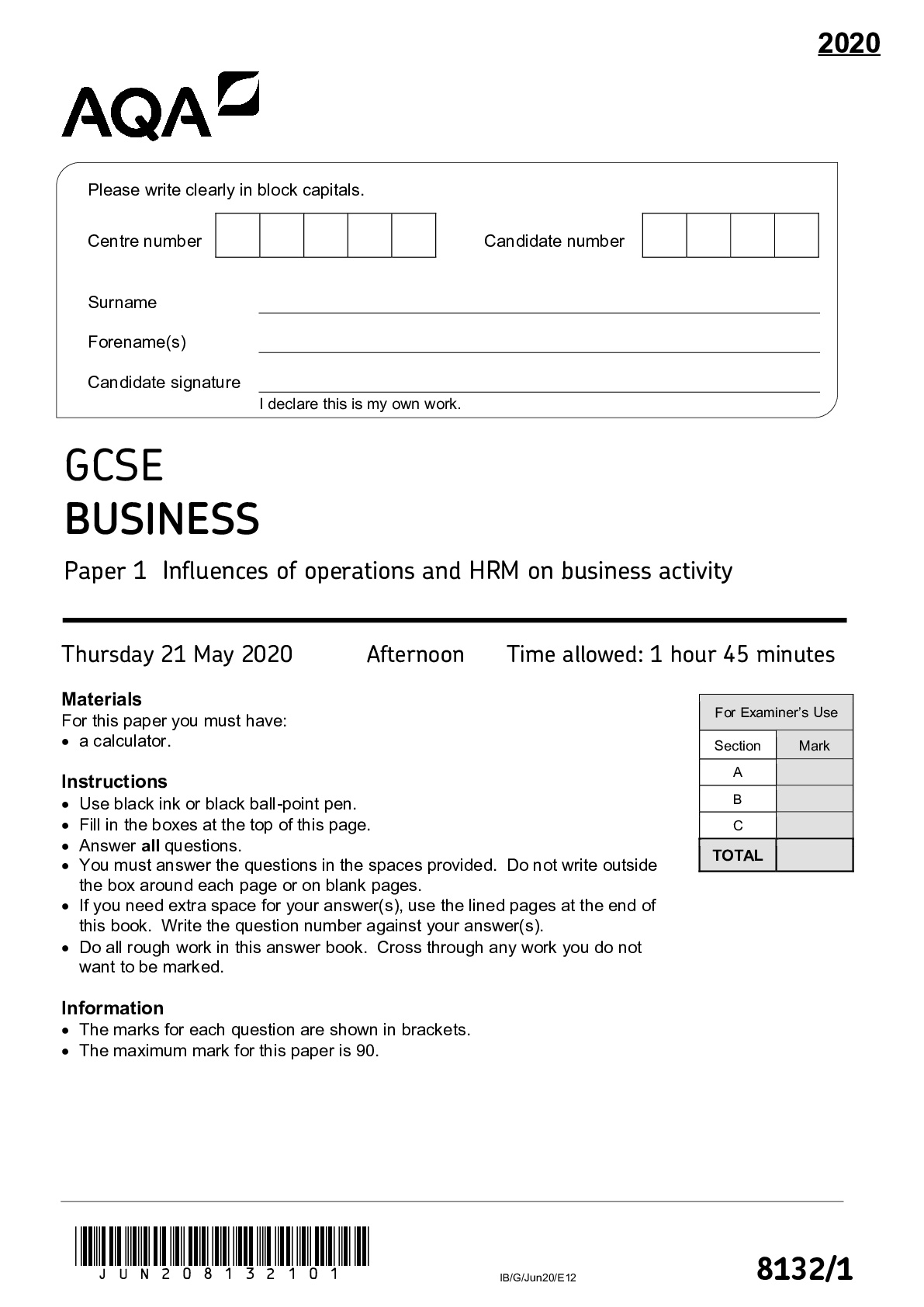Physics > GCSE MARK SCHEME > Forces Specification TasksGCSE Physics , questions and answers. GRADED A+ (All)
Forces Specification TasksGCSE Physics , questions and answers. GRADED A+
Document Content and Description Below
. Draw the symbol for proportionality. ∝ e.g. force ∝ extension 2. Draw the symbol which indicates and approximate value or answer. ~ e.g. speed ~ 3 m/s 3. Convert 12 Nm (newton-metres) ... to joules (J). 12 Nm = 12 J Newton-metres are an equivalent unit to joules, representing work done, as shown by the equation: W = F x s (J) = (N) x (m) 4. Covert 2500 cm3 to m3. 2500 / 1003 = 0.0025 m3 To convert from cm to m, the number is divided by 100. So, to convert from cm3 to m3, the number is divided by 1003. 5. State typical, approximate speeds for a person walking, running and cycling. 1.5 m/s (walking) 3 m/s (running) 6 m/s (cycling) Similar values would also be appropriate approximations. These values are quoted on the specification. 6. State typical, approximate speed for a car, train and passenger plane. 13.5 m/s (car at 30 mph) 40 m/s (train at 90 mph) 160 m/s (plane at 360 mph) It’s useful to have a rough idea of the speeds of different objects. Speed in mph ~ 2 x speed in m/s 7. Estimate the magnitude of a car accelerating away from a traffic light. 3-5 m/s2 At 5 m/s2, a car would go from (approximately) 0 - 10 mph in 1 second. 8. Define inertial mass. The ratio of force over acceleration. You may also be asked to give an explanation of what inertial mass represents (see Q.26). This is a mathematical definition. 9. If a car takes 12m to stop from 20mph and 36m from 40mph, estimate the stopping distance from 80mph. 108 m You need to be able to use ratios and proportional reasoning to estimate values. In this case, as the speed doubles, the stopping distance trebles. 10. A car is travelling at a speed of 8 m/s. Later in the journey, it covers double the distance in half the time. Determine the new speed. Would cover 16 m in 0.5 s. v = 16 / 0.5 = 32 m/s 11. Describe the difference between elastic deformation and inelastic deformation caused by stretching forces. If an object is elastically deformed, it will return to its original shape when the force is removed. If an object is inelastically deformed, it will not return to its original shape when the force is removed. 12. Describe the difference between a linear relationship and a non-linear relationship between force and extension. Linear - for a given increase in force, there will be a given increase in extension. Non-linear - for a given increase in force, the increase in extension will vary. If asked to ‘describe the difference’, the key is to clearly describe each term. 13. Explain why, to change the shape of a stationary object, more than one force must be applied. If only one force was applied, the whole object would accelerate in the direction of that force. A resistive or anchoring force must also be applied. [Show More]
Last updated: 1 year ago
Preview 1 out of 5 pages

Reviews( 0 )
Document information
Connected school, study & course
About the document
Uploaded On
Jun 07, 2022
Number of pages
5
Written in
Additional information
This document has been written for:
Uploaded
Jun 07, 2022
Downloads
0
Views
87

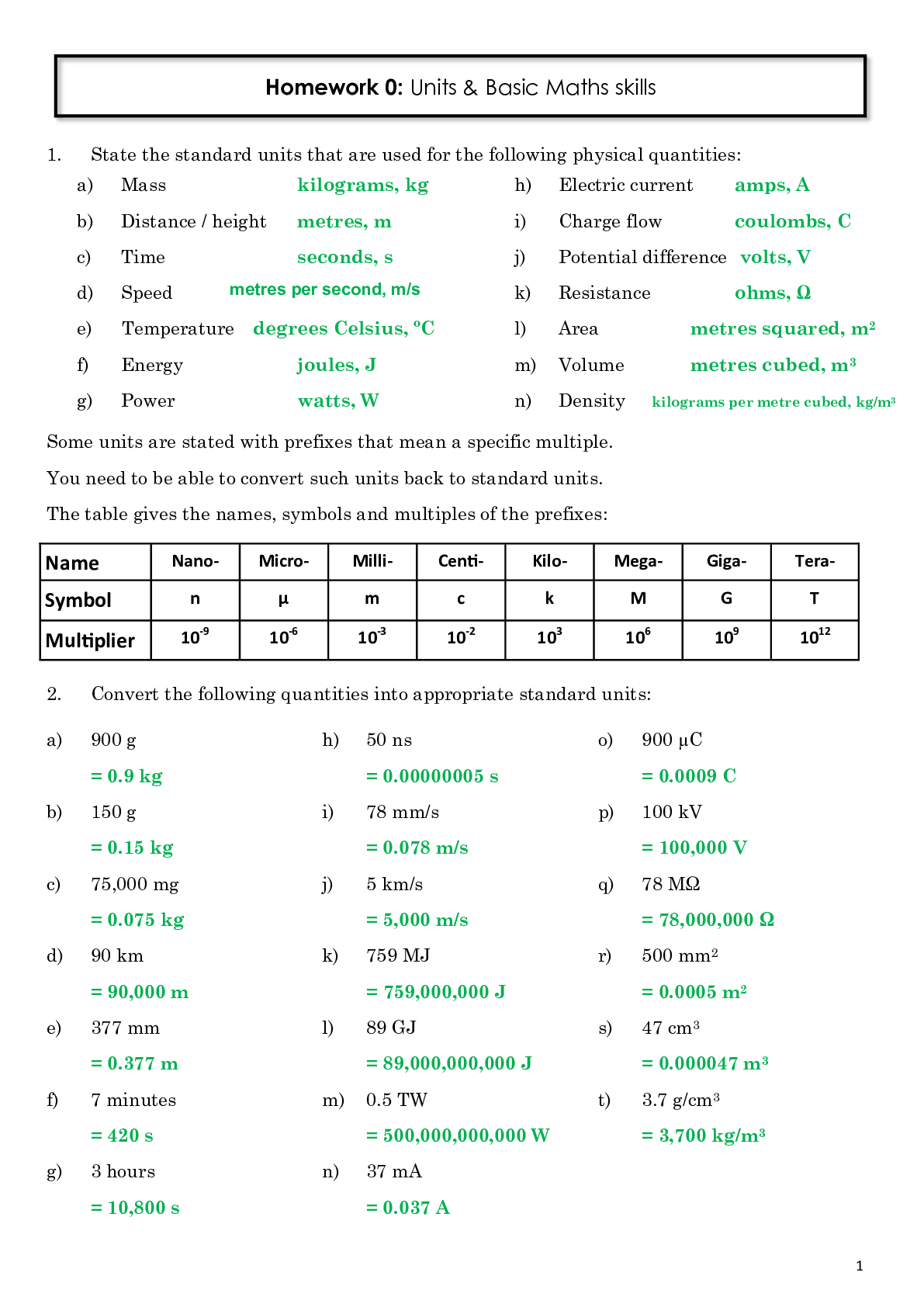



.png)
.png)

.png)
.png)
.png)
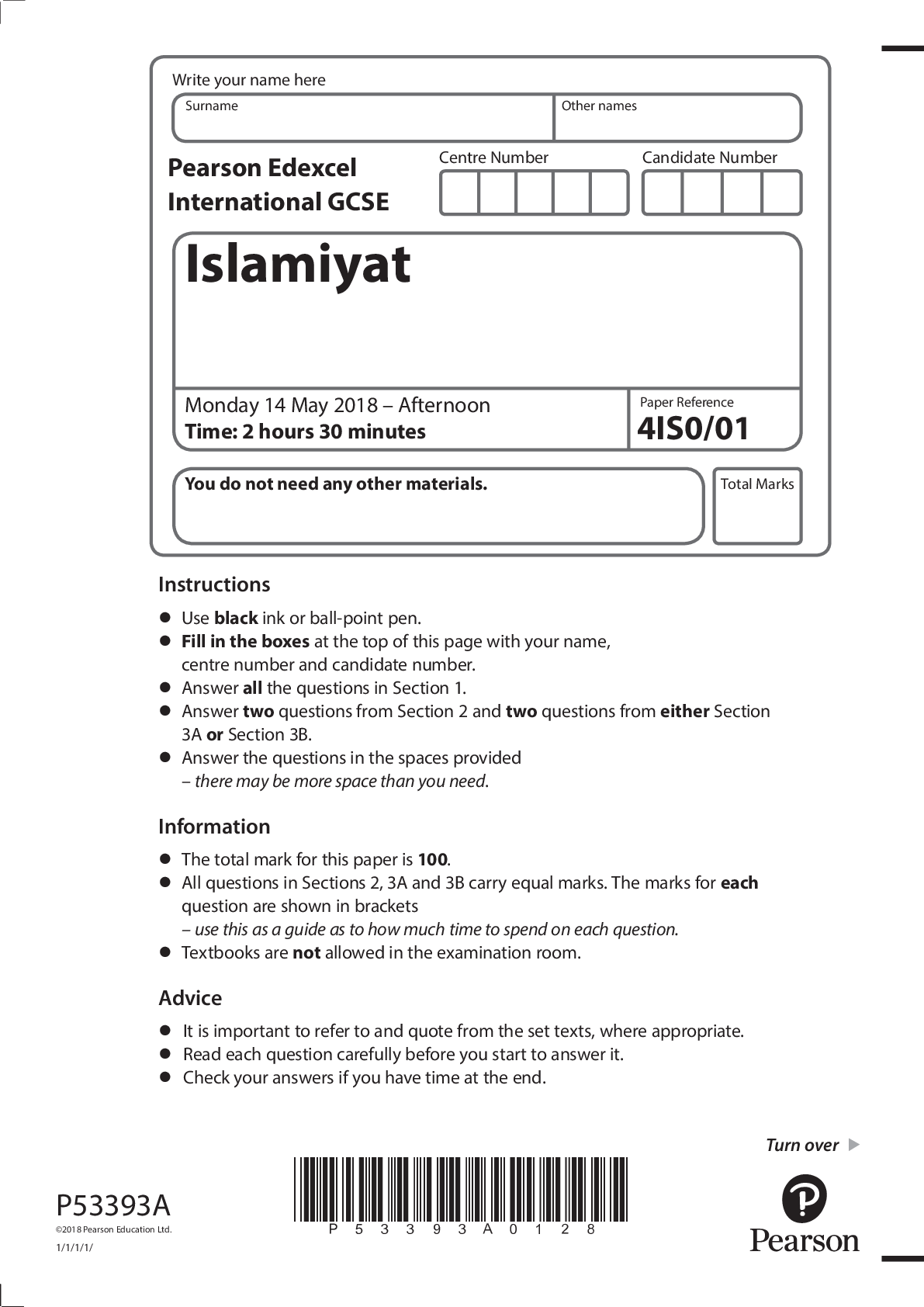
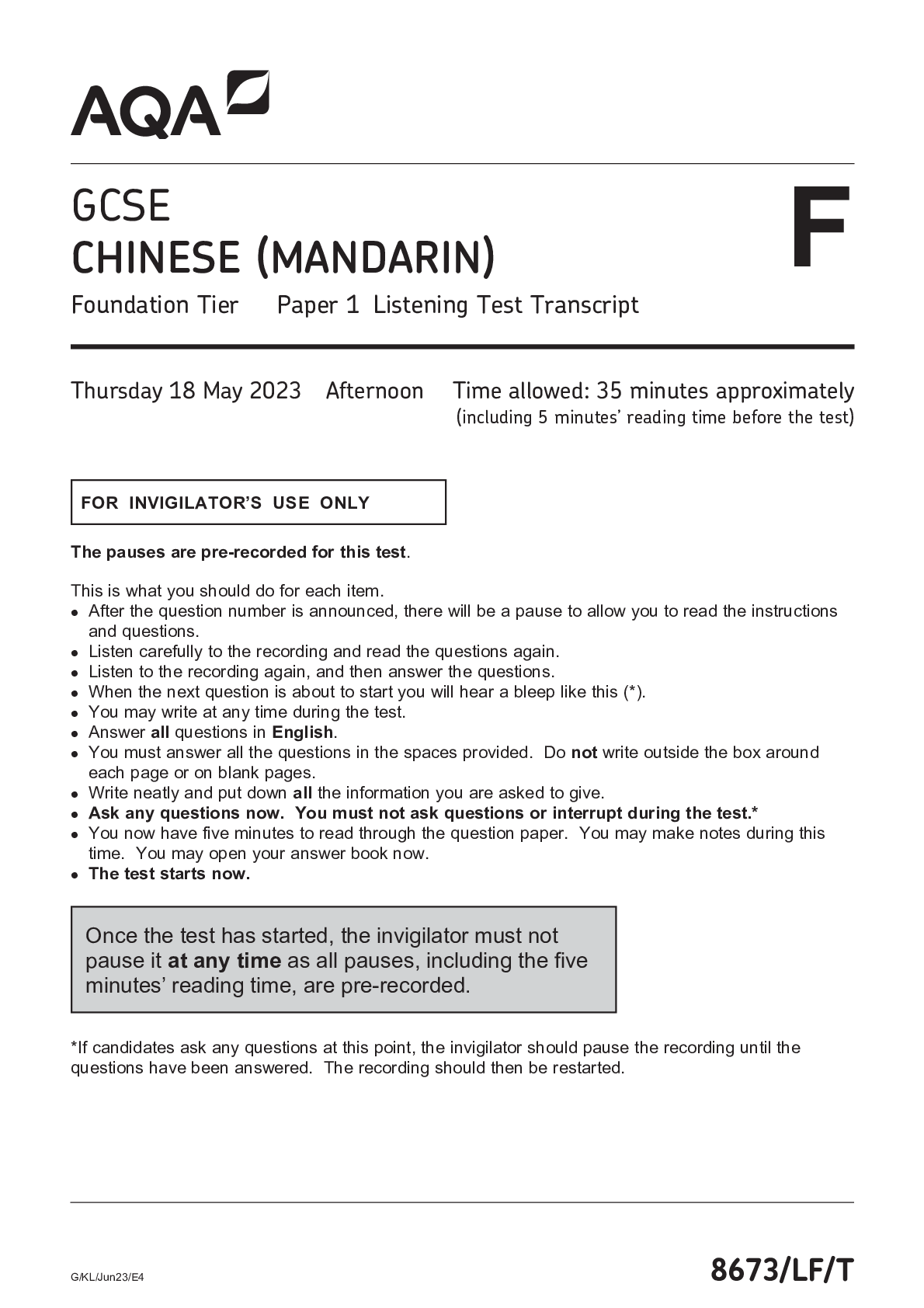

H630-02 Pure Mathematics and Statistics Advanced Subsidiary GCE Mark Scheme for Autumn 2021.png)

.png)
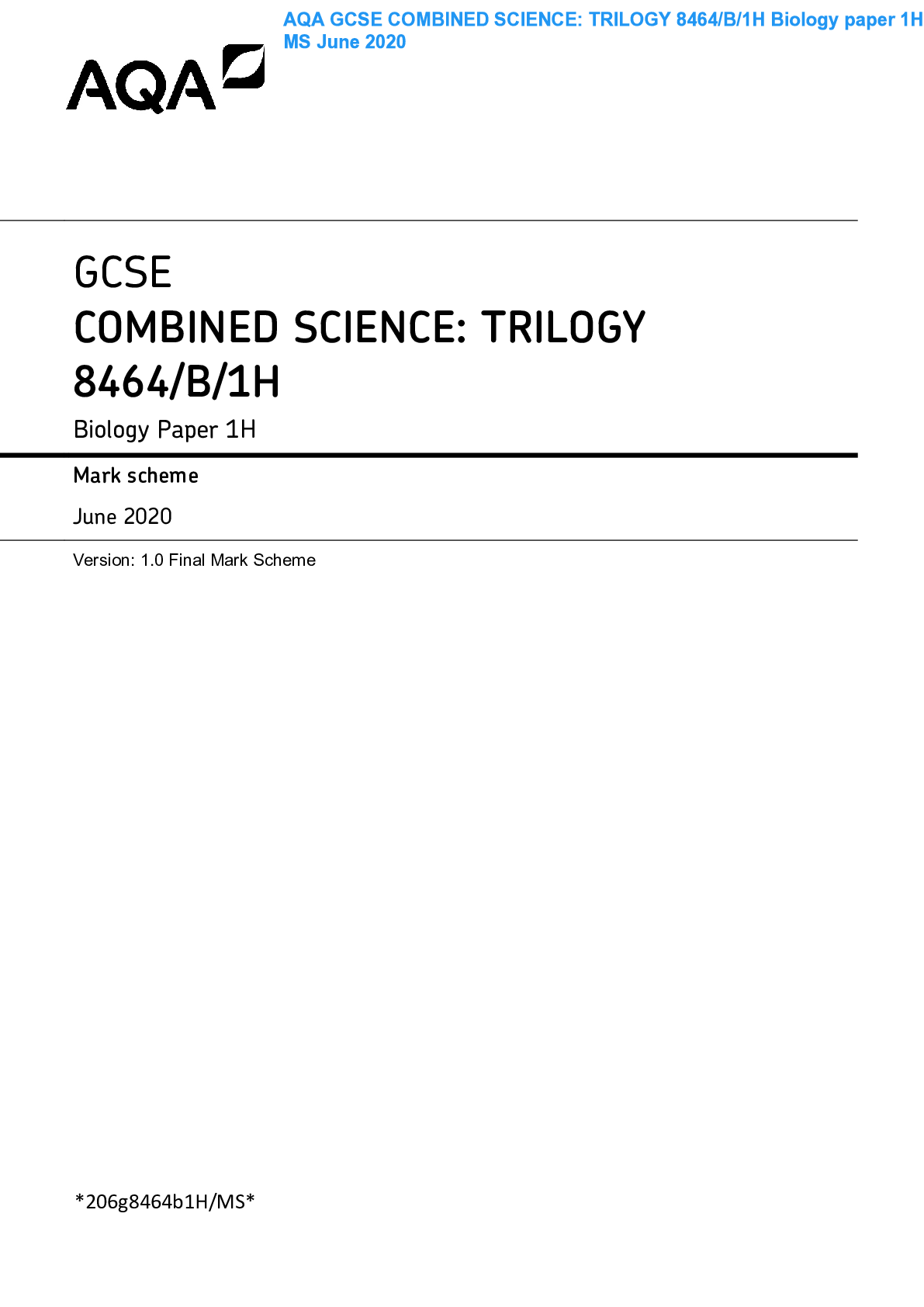
.png)
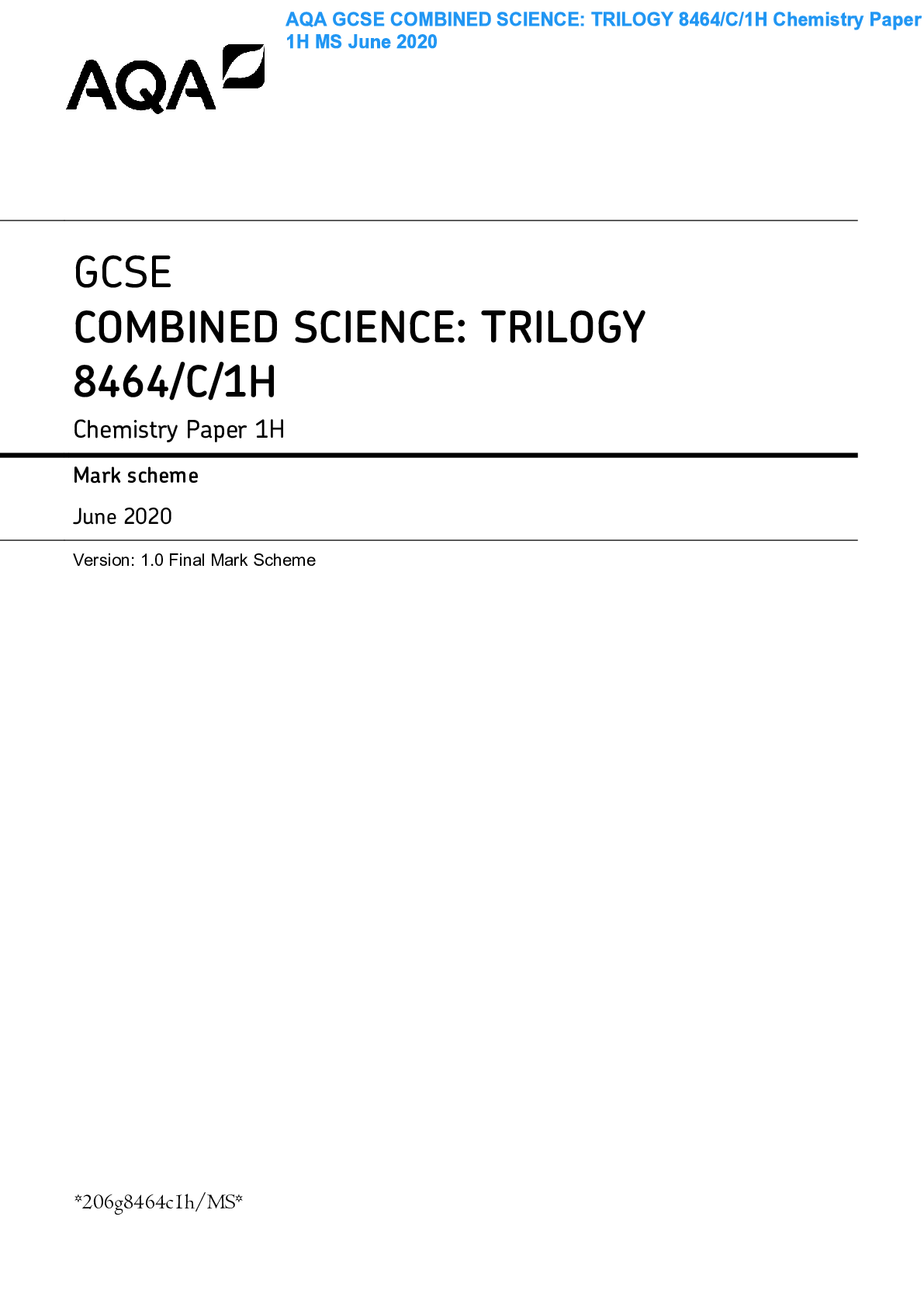
.png)
In Mathematics (1MA1).png)

